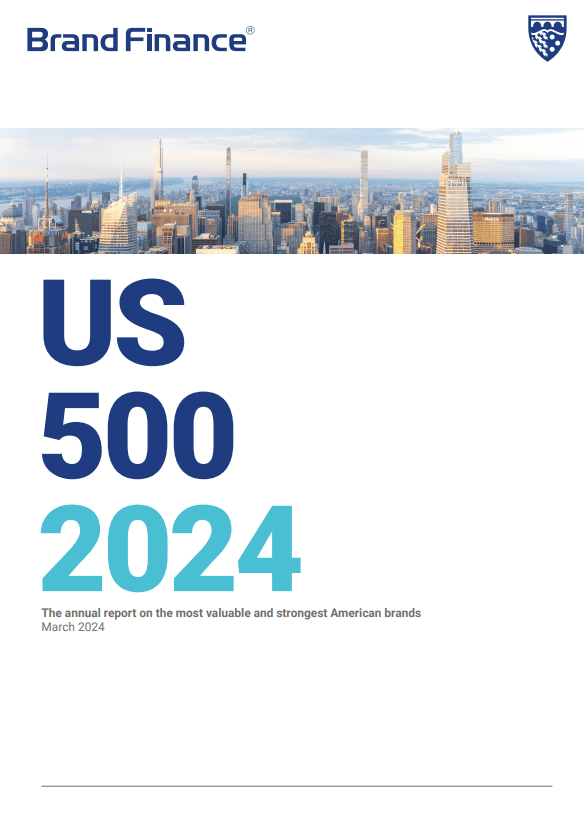This article was originally published in the Brand Finance US 500 2024 Report
Stacy Janiak is Deputy Chief Executive Officer of Deloitte Global, responsible for driving performance across Deloitte’s $65B network of more than 457,000 professionals. She oversees businesses, strategy, innovation, and technology, in pursuit of optimizing Deloitte’s integrated strategy and impact in the market. Stacy serves on the Deloitte Global Executive Committee and as the Executive Sponsor of the Deloitte Global Office of Generative AI.
Interview with Stacy Janiak

Deputy Chief
Executive Officer,
Deloitte
What role does Generative AI (Gen AI) play in the current technology landscape?
Generative AI (Gen AI) has taken center stage this year – claiming its position at the forefront of technological innovation as the driving force behind the transformation of industries. Recent market forecasts reveal that Gen AI is poised to have a profound global economic impact. The Gen AI market is expected to double every other year for the next ten years and ultimately exceed US$200 billion by 2032.
Today, Gen AI is at an inflection point where organizations are just beginning to recognize its potential but are yet to see it as a growth catalyst for business. Gen AI tools and applications continue to proliferate, and we have started to witness the ways in which they can reshape business and government through powerful use cases. The actions taken now are expected to greatly influence how Gen AI adoption unfolds in the future and whether its benefits will be fully realized, while its risks are appropriately managed.
What do business leaders need to think about as it relates to Gen AI adoption?
Building on its annual ‘State of AI in the Enterprise’ report, Deloitte has unveiled the first in a series of quarterly surveys which explores how actions taken now will guide how Gen AI adoption unfolds and if its benefits are fully realized. The survey, The State of Generative AI in the Enterprise: Now decides next, connected with more than 2,800 Director to C-suite level respondents across six industries and 16 countries.
Nearly half of these leaders consider themselves to have a high or very high degree of expertise when it comes to Gen AI. However, more than three-quarters of them are anticipating Gen AI will drive substantial organization transformation in less than three years. This indicates that leaders have high expectations for Gen AI to provide competitive advantage, despite the fact that their expertise in the technology is still maturing.
Industry disruptors understand that Gen AI is not just about technology, it’s about a fundamental shift in business strategy. With many companies looking to incorporate Gen AI only in discrete, siloed initiatives rather than as a systematic revolution across their organization, there may be significant untapped potential to seek larger opportunities for growth and innovation as initial productivity and efficiencies are seen. To fully capitalize on Gen AI’s potential, organizations should harness the disruptive potential of this emerging technology to reinvent how they conduct business today, and in the future.
How are organizations embracing Gen AI?
Today, the majority of organizations have a strong focus on tactical, “off-the-shelf” solutions, which can help build their Gen AI experience and offer immediate returns on efficiency and productivity. However, survey respondents indicated they were less likely to develop bespoke Gen AI tools to address needs unique to their organizations. Over time, organizations may want to evolve to include both approaches to fully unlock the potential of all that Gen AI can do to help transform their business.
On the other hand, organizations that want to fully embrace AI should approach their transformation with a holistic and integrated business strategy, incorporating Gen AI strategies and solutions throughout the fabric of the company. Success with Gen AI rests on an overall assessment of its opportunities and risks and determining how that influences your business strategy. And as technology evolves, business strategy also evolves to keep at the pace of innovation. This is what it means to be a disruptor.
Embracing a disruptor’s strategy means collaborating both within and outside your organizational functions and boundaries. From an internal perspective, this means moving beyond technology and stretching across all parts of the business, e.g., talent, operations, and risk. From an external perspective, it’s about embracing collaborative innovation alongside alliance ecosystems, government agencies, and industry peers.
In addition, disruptors should move beyond business as usual in order to leverage Gen AI for strategic advantage and innovation. It is vital to explore using Gen AI for things that were thought couldn’t be done before. This should enable organizations to solve existing problems while differentiating themselves from their competitors.

How should organizations ensure a humancentric approach to Gen AI implementation?
As Gen AI opens up new ways of working, it consequentially has potential for massive implications for talent—altering how we work, learn, and collaborate. To be successful, organizations should focus on the human impact, by prioritizing training and reskilling and identifying a path to reinvesting the time saved through efficiency improvements.
Many organizations surveyed indicate that they are less prepared when it comes to challenges related to Gen AI and talent. In fact, a lack of technical talent and skills is the top challenge holding organizations back. There is more work to be done as less than half of those surveyed agree they are sufficiently educating their employees on the capabilities, benefits, and value of Gen AI.
Importantly, we must not lose sight of the fact that some of the most productive uses of Gen AI will not be about replacing people but instead will be about augmenting people’s skills to enhance productivity, knowledge, and creativity. Humans are expected to thrive in this environment and will be critical to ensuring that risks are addressed and mitigated along the way.
What proactive steps should an organization take to anticipate potential challenges and improve trust and confidence in Gen AI?
While Gen AI has unleashed new ways of working and transforming enterprises, it has also exposed new potential risks. These risks call for increased collaboration beyond organizational boundaries.
Only a quarter of those surveyed believe their organizations are highly or very highly prepared to address governance and risk issues related to Gen AI adoption. A proactive and robust approach to risk and governance is essential in safeguarding the business.
While the regulatory landscape continues to evolve, a robust governance framework is the cornerstone of a successful Gen AI integration. This isn’t about setting rules, it‘s about crafting a vision that aligns with your business’ values and pinpointing potential risks and gaps in capabilities, then validating that performance. By taking this critical step, a framework can both help safeguard the business and establish confidence and provide a foundation for Gen AI to flourish. Proactively anticipating potential challenges and taking active steps to improve trust and confidence in the technology should provide a balanced approach that helps enable an organization to manage the risks of Gen AI innovation with the rewards. Striking this balance should create trust across the fabric of your organization.

